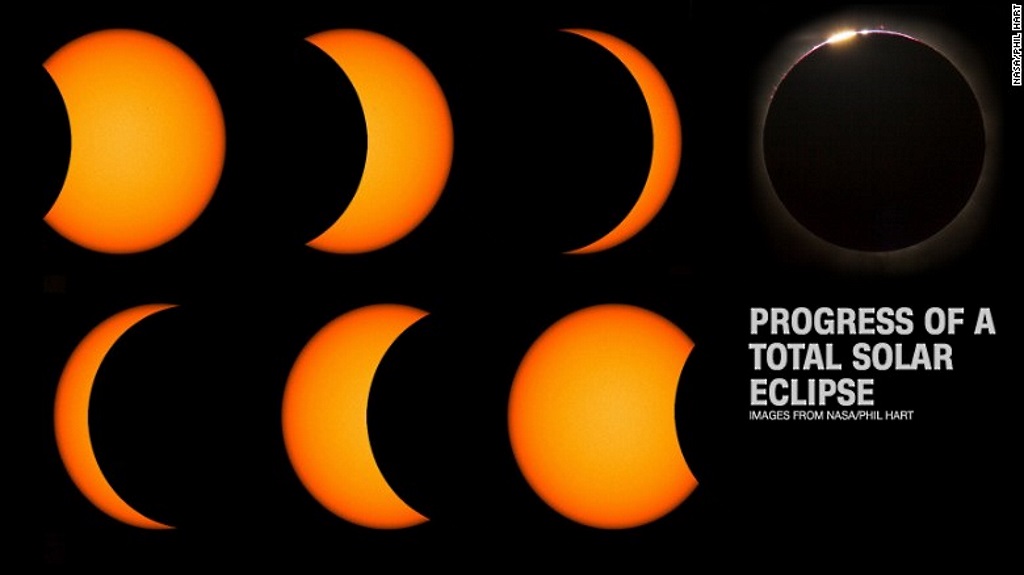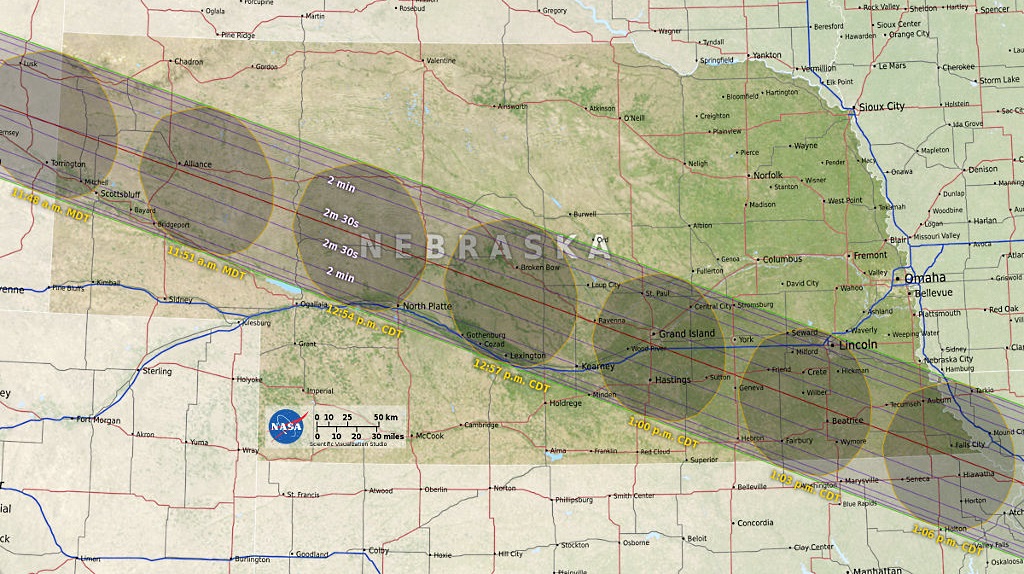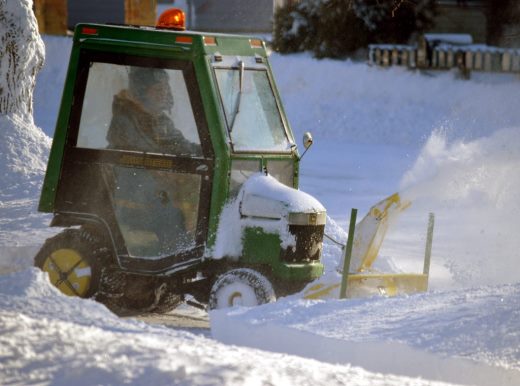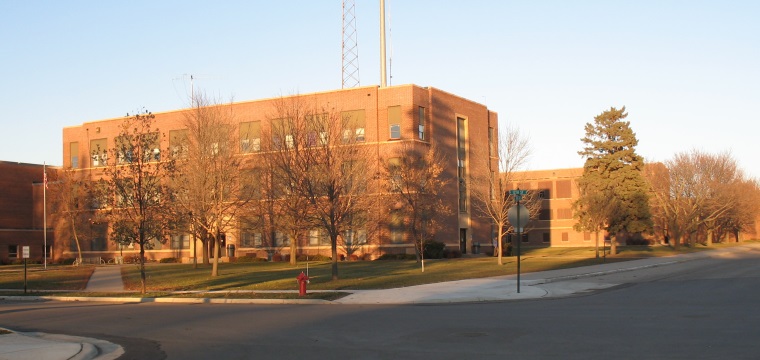Total solar eclipse set for Monday, August 21
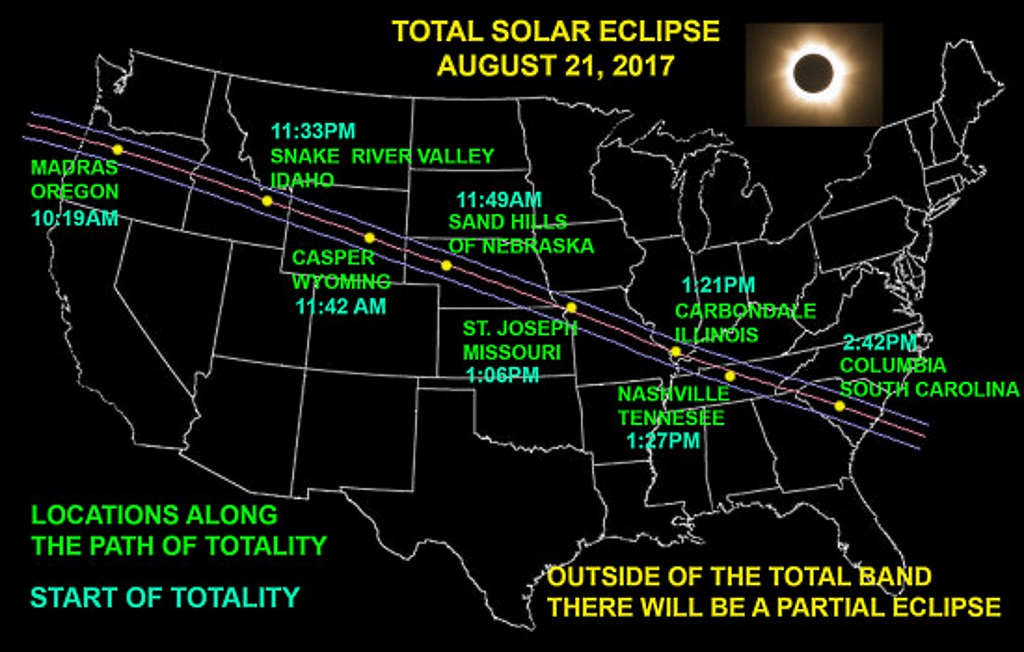
The eclipse will begin in the morning, near 10:17 a.m. Pacific Daylight Time, cross northwest Oregon. It will then move southeastward into Nebraska and the northern Kansas City metro area right during the middle of the day, from 12:50 p.m. Central Daylight Time to 1:10 p.m. Central Daylight Time. It will exit the United States as it passes through South Carolina, near Charleston, at 2:48 p.m. Eastern Daylight Time. The closer to the center of the path, the longer totality will be. It is estimated that it will last the longest near Carbondale, Illinois – two minutes, 40 seconds.
What is an eclipse?
An eclipse occurs when the sun, earth and moon move into alignment with each other. One of the bodies blocks the view of another and creates a shadow..
There are two different types of eclipses – solar and lunar.
A lunar eclipse happens at nighttime and occurs when the earth passes between the sun and the moon, creating a shadow on the moon. These types of eclipses can cover a large area and occur roughly two-to-four times per year. A lunar eclipse can cover a large area will generally last for a few hours.
A total solar eclipse, however, is a rare phenomenon due to its narrow path of totality and brevity. According to the National Weather Service of Sioux Falls, South Dakota, the last total solar eclipse to occur across the continental United States was on February 26th, 1979, when totality moved across the Pacific northwest near the Canadian border during the morning hours of Mountain Standard and Pacific Standard time. The rest of the United States was treated to a partial solar eclipse, with 90% or more of the sun obscured in the northern plains.
Most maps show the eclipse as a circle. However, in reality, that is not the case. The oblique view (an image of an object made from an angle) of the eclipse as it moves through takes into account terrain differences on earth – as well as the edge of the moon with its own mountains and valleys.
Safety information when viewing the solar eclipse
It is very important to have proper eye protection during the partial phase of the solar eclipse. Without eye protection, serious eye damage will result.
If fortunate to view totality, the 2½ minute portion of the soar eclipse in which the moon totally obscures the sun, the eclipse can be viewed without eye protection. During totality, the corona and chromosphere around sun are about a bright as a full moon. However, for areas outside of totality, and/or when the solar eclipse is only partial, eye protection will be needed.
The only safe way to look directly at the uneclipsed or partially eclipsed sun, according to the National Aeronautics and Space Administration (NASA) is through special-purpose solar filters, such as eclipse glasses
or hand-held solar viewers. Homemade filters or ordinary sunglasses, even very dark ones, are not safe for looking at the Sun. To date, four manufacturers have certified that their eclipse glasses and handheld solar viewers meet the ISO 12312-2 international standard of certification for such products. They include, Rainbow Symphony, American Paper Optics, Thousand Oaks Optical and TSE 17. Some of the area retail chains offering these recommended brands are, Best Buy, Casey’s General Store, Lowe’s and Walmart.
Always inspect your solar filter before use; if scratched or damaged, discard it. Read and follow any instructions printed on or packaged with the filter. Always supervise children using solar filters.
- Stand still and cover your eyes with your eclipse glasses or solar viewer before looking up at the bright sun. After glancing at the sun, turn away and remove your filter — DO NOT remove it while looking at the sun.
- Do not look at the uneclipsed or partially eclipsed sun through an unfiltered camera, telescope, binoculars or other optical device. Similarly, do not look at the sun through a camera, a telescope, binoculars or any other optical device while using your eclipse glasses or hand-held solar viewer — the concentrated solar rays will damage the filter and enter your eye(s), causing serious injury. Seek expert advice from an astronomer before using a solar filter with a camera, a telescope, binoculars or any other optical device.
- If you are within the path of totality, remove your solar filter only when the moon completely covers the sun’s bright face and it suddenly gets quite dark. Experience totality; then, as soon as the bright sun begins to reappear, replace your solar viewer to glance at the remaining partial phases.
An alternative method for safe viewing of the partially eclipsed sun is pinhole projection. For example, cross the outstretched, slightly open fingers of one hand over the outstretched, slightly open fingers of the other. With your back to the sun, look at your hands’ shadow on the ground. The little spaces between your fingers will project a grid of small images on the ground, showing the sun as a crescent during the partial phases of the eclipse.
Next total solar eclipse to happen in 2024
If for some reason you miss this year’s solar eclipse, be heartened. Come 2024, a total solar eclipse will cross the United States border in southern Texas and move and move up into the eastern half of the country.
Its shadow will be wider and totality will last more than four minutes along most of its track.
